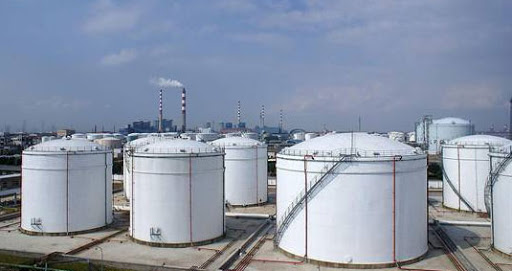
Storage Tank
Storage Tank
Biodiesel is a liquid fuel, technically known as a mono alkyl ester, made from oils and alcohols. Biodiesel is a renewable fuel that can be produced in any climate using already developed agricultural practices. Biodiesel is made from renewable resources such as vegetable oils or other types of biomass. B100 is 100% biodiesel. Biodiesel is widely available in both its neat form (B100) and in blends with petroleum diesel (for example B2, B5, B20).
Biodiesel refers to a vegetable oil- or animal fat-based diesel fuel consisting of long-chain alkyl (methyl, ethyl, or propyl) esters. Biodiesel is typically made by chemically reacting lipids (e.g., vegetable oil, soybean oil,animal fat) with an alcohol producing fatty acid esters. Biodiesel is a drop-in biofuel and thus meant to be used in standard diesel engines and is thus distinct from the vegetable and waste oils used to fuel converted diesel engines. Biodiesel can be used alone, or blended with petrodiesel in any proportions.[1] Biodiesel blends can also be used as heating oil.


Blends of biodiesel and conventional hydrocarbon-based diesel are products most commonly distributed for use in the retail diesel fuel marketplace. Much of the world uses a system known as the "B" factor to state the amount of biodiesel in any fuel mix: 100% biodiesel is referred to as B100, 20% biodiesel, 80% petrodiesel is labeled B20, 5% biodiesel, 95% petrodiesel is labeled B5, 2% biodiesel, 98% petrodiesel is labeled B2.
Blends of 20% biodiesel and lower can be used in diesel equipment with no, or only minor modifications,although certain manufacturers do not extend warranty coverage if equipment is damaged by these blends. The B6 to B20 blends are covered by the ASTM D7467 specification. Biodiesel can also be used in its pure form (B100), but may require certain engine modifications to avoid maintenance and performance problems. Blending B100 with petroleum diesel may be accomplished by: Mixing in tanks at manufacturing point prior to delivery to tanker truck, Splash mixing in the tanker truck (adding specific percentages of biodiesel and petroleum diesel), In-line mixing, two components arrive at tanker truck simultaneously. Metered pump mixing, petroleum diesel and biodiesel meters are set to X total volume, transfer pump pulls from two points and mix is complete on leaving pump.